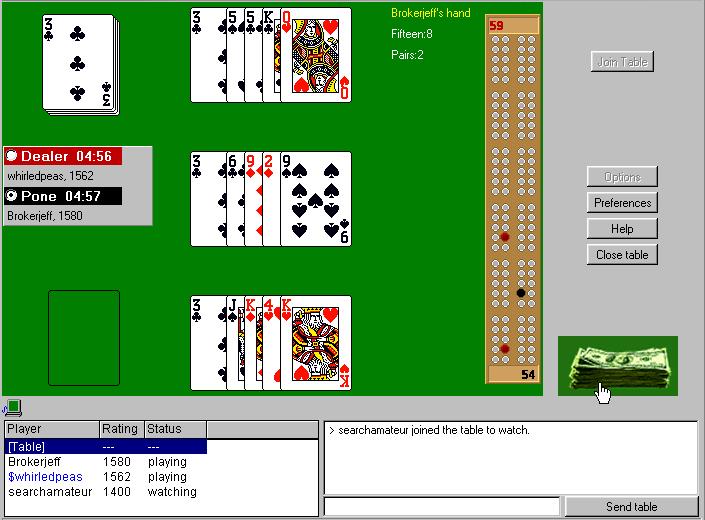
If all four cards in the crib are the same suit, no points can be taken unless the fifth card is also that same suit.(When counting the crib, only 5 card flushes score.) It gives a fifth point if it extends a 4 card flush to a 5 card flush, but 3 spades and a heart don't score flush points if you cut a spade. A flush (all four cards are the same suit) is worth 4 points.You may use a card more than once in different combinations. Any combination of cards that add up to 15 counts as 2 points (even if it took all five cards to do it).They must consist of at least three cards.

6-7-8) do not have to be the same suit, and count as 1 point per card.
Pairs, triples and quadruples count - 2, 6 and 12 points, respectively. You score one point if you hold the Jack of the suit that was cut. This is why you kept them in separate piles! If you are the dealer, count your original hand and the crib separately. Your hand consists of the four cards you played, plus the cut card. The person to count first is the non-dealer(s), then the dealer, then the crib. Once all cards have been played, it is time to count them up. If the last card makes exactly 31, the player gets 1 additional point.Ĭount up the cards to get your final score. After "31" (or as close as possible in the hand), the person laying down the last card takes a point for having the final card. If the second player now plays a 3 or a 7 he would then score 4 points for making a run of 4. If the first player now plays a 5 he would score three points for completing a run of 3. For example: The first player plays a 4, second player plays a 6. They must be consecutive cards, but not necessarily in order. (Note: if Player 2 is not able to lay down any other card without exceeding 31, and Player 1 has the fourth seven, he can lay it down and earn the 12 points.) The fourth seven would be worth 12 points. If Player 1 then lays down a third 7, he earns 6 points. For example, player 1 lays down a 7 and Player 2 immediately follows with another 7, which would earn him 2 points. Points are also earned and pegged for pairs (and triplets, etc.). If either player reaches 15 points exactly, this earns him 2 points. 
As you score, move your peg around the board. You get extra points for pairs, runs, and certain numbers. While you're laying cards and thinking about not going over 31, use what your opponent(s) is laying to your advantage. " Make pairs, runs, and other combinations to score points.






 0 kommentar(er)
0 kommentar(er)
